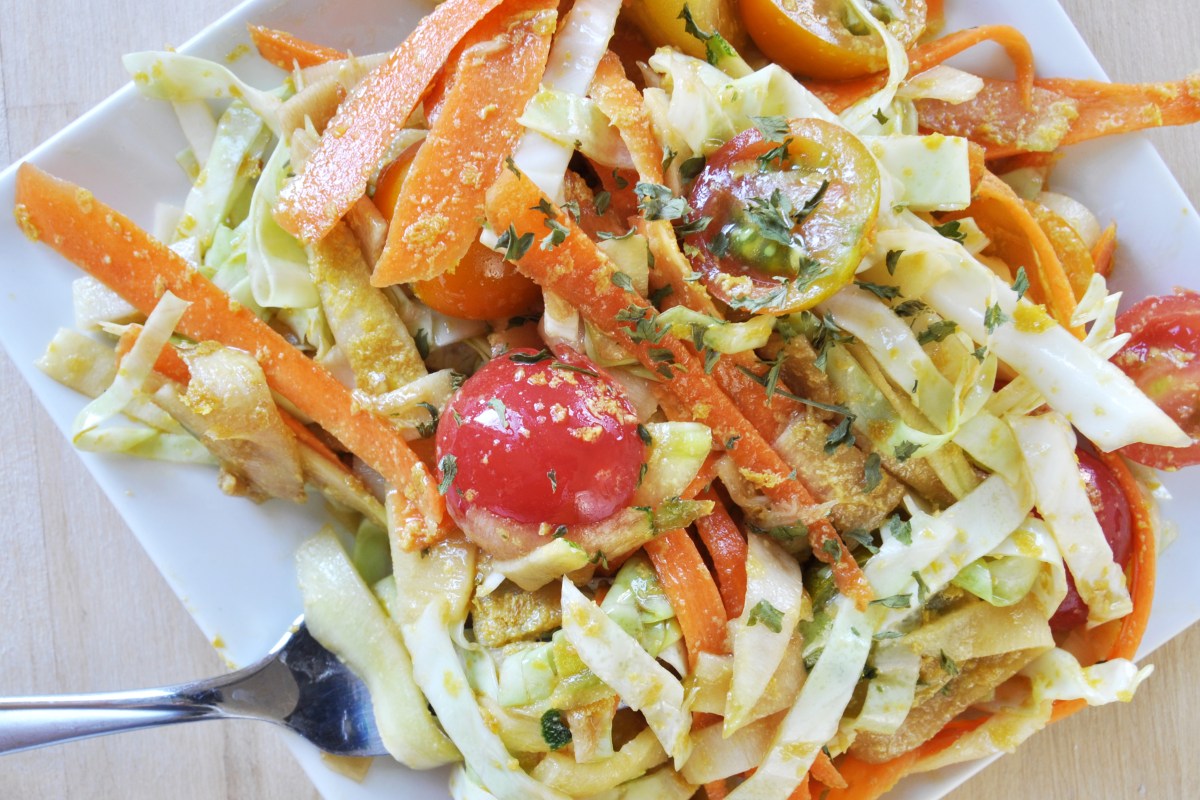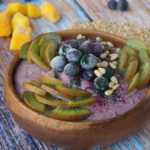Embark on a culinary journey through the vibrant world of raw vegan cuisine! This comprehensive guide unveils a treasure trove of delicious and nutritious recipes, perfectly tailored to each season. From the bright, fresh flavors of spring salads to the warming spices of winter desserts, we explore the art of crafting delectable raw vegan meals that nourish the body and delight the senses. Discover how seasonal ingredients unlock unique flavor profiles and nutritional benefits, transforming simple dishes into culinary masterpieces.
Prepare to be inspired by detailed step-by-step instructions, stunning visual descriptions, and insightful tips for achieving optimal texture and flavor in every recipe. Whether you’re a seasoned raw vegan chef or a curious beginner, this guide provides the knowledge and inspiration to create delicious and healthy meals all year round. Get ready to experience the transformative power of seasonal eating, elevated by the vibrant simplicity of raw vegan cooking.
Seasonal Raw Vegan Recipe Categories
Raw vegan cuisine offers a vibrant and adaptable approach to healthy eating, with seasonal ingredients playing a crucial role in both flavor and nutritional value. By focusing on what’s fresh and readily available, we can create delicious and nutrient-rich meals throughout the year. This exploration delves into the specific recipe categories that thrive in each season, highlighting the unique ingredients and their contribution to the overall culinary experience.
Spring Raw Vegan Recipes
Spring’s arrival brings a burst of fresh, vibrant produce. This season is ideal for lighter, brighter recipes that showcase the delicate flavors of newly harvested ingredients.
| Category | Description |
|---|---|
| Spring Vegetable Wraps | Thinly sliced cucumbers, radishes, and spring onions wrapped in large lettuce leaves, often with a vibrant herb-based dressing. |
| Asparagus and Pea Salad | Tender asparagus spears and sweet peas tossed with a lemon-tahini dressing, featuring a medley of fresh herbs like mint and dill. |
| Strawberry Rhubarb Crisp (raw) | A refreshing dessert featuring the tartness of rhubarb and sweetness of strawberries, topped with a crunchy oat and nut crumble (made without baking). |
| Avocado and Pea Soup | Creamy avocado blended with fresh or frozen peas, creating a cool and vibrant green soup, often garnished with sprouts and herbs. |
Visual Representation: Imagine a vibrant green and red palette. A circular arrangement showcasing a central bowl of vibrant green avocado-pea soup, surrounded by smaller bowls containing the ingredients: bright green asparagus spears, emerald pea pods, and ruby-red strawberries. The background is a soft spring green, with delicate white flowers scattered around the edges.
Ingredient Impact: The delicate sweetness of spring peas and strawberries contrasts beautifully with the subtle earthiness of asparagus and the creaminess of avocado. The overall flavor profile is light, refreshing, and subtly sweet.
Summer Raw Vegan Recipes
Summer’s abundance of ripe fruits and vegetables lends itself to refreshing and hydrating recipes. The focus is on maximizing the natural sweetness and juicy textures of seasonal produce.
| Category | Description |
|---|---|
| Gazpacho | A chilled Spanish soup made with blended raw tomatoes, cucumbers, peppers, and onions, offering a cool and vibrant summer treat. |
| Watermelon and Mint Salad | Juicy watermelon cubes paired with fresh mint leaves, possibly incorporating feta cheese for a savory twist (if not strictly vegan). |
| Mango Lassi (raw) | A creamy and refreshing drink made with blended mango, coconut water, and a touch of lime juice. |
| Zucchini Noodles with Pesto | Spiralized zucchini noodles tossed with a vibrant basil pesto, often incorporating other summer vegetables like cherry tomatoes and bell peppers. |
Visual Representation: A sun-drenched scene with a dominant orange and yellow color scheme. A large platter displays a colorful array of chopped watermelon, vibrant green mint leaves, and a bowl of bright green gazpacho. The background is a bright sunny yellow, with a playful scattering of orange and yellow fruits.
Ingredient Impact: Summer’s sweetness takes center stage, with the juicy sweetness of watermelon and mango contrasting against the refreshing coolness of gazpacho and the vibrant herbaceousness of basil pesto. The overall flavor profile is intensely fruity, refreshing, and intensely flavorful.
Autumn Raw Vegan Recipes
Autumn brings a shift towards warmer, earthier flavors. Root vegetables and hearty greens become prominent, offering a comforting and nourishing culinary experience.
| Category | Description |
|---|---|
| Butternut Squash and Apple Salad | Sweet butternut squash and crisp apples paired with pecans or walnuts, often dressed with a maple-balsamic vinaigrette. |
| Kale and Beetroot Salad | Earthy beetroot and nutrient-rich kale, often paired with roasted pumpkin seeds and a tangy lemon dressing. |
| Raw Pumpkin Pie | A creamy and spiced pumpkin pie made without baking, featuring a blend of pumpkin puree, spices, and a cashew-based cream. |
| Carrot Ginger Soup | A warming and subtly spicy soup made with blended carrots, ginger, and warming spices. |
Visual Representation: A warm, earthy palette dominated by oranges, browns, and deep reds. A rustic wooden table displays a bowl of vibrant orange butternut squash and apple salad, alongside a bowl of deep red beetroot and kale salad. The background is a warm autumnal orange, with falling leaves in shades of brown, red, and gold.
Ingredient Impact: The sweetness of butternut squash and apples blends seamlessly with the earthiness of beetroot and kale. Spices like ginger and cinnamon add warmth and depth, creating a comforting and satisfying flavor profile.
Winter Raw Vegan Recipes
Winter calls for hearty and warming recipes that utilize root vegetables and nutrient-rich ingredients. The focus is on creating comforting and nourishing meals that provide sustained energy.
| Category | Description |
|---|---|
| Root Vegetable Salad with Tahini Dressing | A medley of roasted root vegetables like carrots, parsnips, and sweet potatoes, tossed with a creamy tahini dressing. |
| Creamy Avocado and Spinach Soup | A rich and creamy soup featuring blended avocado, spinach, and warming spices. |
| Raw Chocolate Avocado Mousse | A decadent and healthy dessert made with blended avocado, cocoa powder, and maple syrup. |
| Spiced Pear and Walnut Salad | Sweet pears paired with crunchy walnuts and a warming spice blend, possibly with a touch of citrus. |
Visual Representation: A cozy and warm palette featuring deep greens, browns, and creamy whites. A rustic wooden bowl is filled with a hearty root vegetable salad, showcasing the vibrant colors of carrots, parsnips, and sweet potatoes. A smaller bowl of creamy avocado and spinach soup sits beside it. The background is a deep forest green, suggesting a wintery landscape.
Ingredient Impact: The earthiness of root vegetables is complemented by the creaminess of avocado and the richness of cocoa. Spices add warmth and depth, creating a satisfying and comforting flavor profile perfect for colder months.
Step-by-Step Recipe Creation

This section details the creation of a vibrant and refreshing spring salad, focusing on sourcing the freshest ingredients and employing techniques that maximize texture and flavor. We’ll guide you through each step, from selecting the perfect produce to crafting a complementary dressing that elevates the entire dish. The emphasis is on showcasing the natural beauty and deliciousness of spring vegetables in their raw, unadulterated form.
Spring Salad Recipe
This recipe highlights the peak flavors of spring with a medley of colorful vegetables and a light, zesty dressing. The focus is on maintaining the crispness and freshness of the raw ingredients.
Yields: 4 servings
Prep time: 20 minutes
- Ingredient Sourcing and Preparation: Begin by selecting the freshest spring vegetables available. Look for vibrant colors and firm textures. This recipe uses asparagus, pea shoots, radishes, and sugar snap peas. Gently wash all vegetables under cool running water. Snap off the tough ends of the asparagus and thinly slice the spears. Trim the ends of the sugar snap peas. Thinly slice the radishes, reserving a few for garnish. Gently rinse the pea shoots.
- Vegetable Preparation Techniques for Optimal Texture: To maintain the crispness of the vegetables, avoid over-processing. Use a sharp knife for precise cuts to prevent bruising. Avoid washing the vegetables too vigorously, as this can damage delicate leaves. For the asparagus, a mandoline slicer can create uniformly thin slices for even cooking and a pleasing texture. The radishes, when thinly sliced, offer a delightful peppery crunch. The sugar snap peas retain their sweetness and pleasant snap when left whole or halved.
- Dressing Creation: A simple yet flavorful dressing will enhance the salad’s natural flavors. In a small bowl, whisk together 2 tablespoons of fresh lemon juice, 1 tablespoon of extra virgin olive oil, 1 teaspoon of Dijon mustard, a pinch of sea salt, and a few grinds of black pepper. The lemon juice provides brightness, the olive oil adds richness, and the Dijon mustard lends a subtle tang. Taste and adjust seasoning as needed. A touch of maple syrup can be added for extra sweetness if desired.
- Salad Assembly: In a large bowl, gently combine the prepared asparagus, pea shoots, radishes, and sugar snap peas. Pour the dressing over the salad and toss gently to coat. Avoid over-mixing, as this can bruise the delicate vegetables. Garnish with the reserved radish slices and a sprinkle of fresh herbs, such as chives or dill, if available. Serve immediately for optimal freshness and flavor.
Achieving Optimal Texture and Flavor
Maintaining the crispness and vibrant flavors of raw spring vegetables is key to a successful salad. This involves careful selection, gentle handling, and precise cutting techniques. Using a mandoline slicer for even slices and avoiding over-washing are essential steps to preserving texture. The dressing should complement, not overpower, the delicate flavors of the vegetables. The balance of acidity, richness, and subtle spice in the dressing is crucial. A well-balanced dressing will enhance the natural sweetness and subtle bitterness of the spring vegetables.
Visually Appealing Presentation
The presentation of the salad plays a vital role in enhancing the overall dining experience. Arranging the vegetables in a visually appealing manner will heighten the senses and make the salad more inviting. Using a variety of colors and textures, such as the vibrant green of the pea shoots and the deep green of the asparagus, contrasting with the red of the radishes, creates a visually stunning effect. A simple garnish of fresh herbs adds a final touch of elegance and enhances the aroma. Serving the salad in a shallow bowl allows the colors and textures to be fully appreciated.
Winter Raw Vegan Desserts and Treats
Winter’s chill calls for warming, comforting desserts, and raw vegan options deliver decadent satisfaction without compromising health or ethical choices. These recipes utilize the rich flavors of winter spices and naturally creamy textures to create truly delightful treats. The focus is on achieving creamy textures without relying on dairy or refined sugars, instead leveraging the natural properties of ingredients like avocados, cashews, and coconut cream.
Creamy Texture Achievement in Raw Vegan Desserts
Achieving a luxuriously creamy texture in raw vegan desserts is surprisingly simple, requiring clever use of readily available ingredients. The key lies in blending the right combination of fats and liquids to create a smooth, rich consistency. Avocados provide a naturally creamy base, while cashews, soaked in water for at least four hours, yield a remarkably smooth and velvety texture when blended. Coconut cream, extracted from the thick top layer of a refrigerated can of full-fat coconut milk, contributes both creaminess and a subtle coconut flavor. These ingredients, when combined and processed in a high-speed blender, create a remarkably smooth and decadent foundation for various desserts. The addition of liquids, such as coconut water or almond milk, can further adjust the consistency, ensuring the desired level of creaminess.
Three Decadent Winter Raw Vegan Dessert Recipes
These recipes showcase the versatility of raw vegan desserts, offering a variety of flavors and textures perfect for the winter season.
- Spiced Chocolate Avocado Mousse:
- Ingredients: 1 ripe avocado, 1/4 cup unsweetened cocoa powder, 1/4 cup maple syrup, 1/4 cup almond milk, 1 teaspoon vanilla extract, 1/2 teaspoon cinnamon, 1/4 teaspoon nutmeg, pinch of salt.
- Steps: Combine all ingredients in a high-speed blender and blend until completely smooth and creamy. Chill for at least 30 minutes before serving. Garnish with cacao nibs and a sprinkle of cinnamon.
- Cranberry Orange Cashew Cream Tartlets:
- Ingredients: Crust: 1 cup raw almonds, 1/4 cup shredded coconut, 2 tablespoons maple syrup. Filling: 1 cup soaked cashews, 1/4 cup cranberry sauce, 2 tablespoons orange juice, 1 tablespoon maple syrup, 1 teaspoon vanilla extract, zest of 1 orange.
- Steps: For the crust, pulse almonds and coconut in a food processor until finely ground. Add maple syrup and pulse until a dough forms. Press into mini tart pans. For the filling, blend soaked cashews, cranberry sauce, orange juice, maple syrup, vanilla extract, and orange zest until smooth and creamy. Pour into the prepared crusts and chill for at least 2 hours.
- Gingerbread Nice Cream:
- Ingredients: 2 frozen bananas, 1/4 cup raw cashews (soaked), 1 tablespoon maple syrup, 1 teaspoon ground ginger, 1/2 teaspoon ground cinnamon, 1/4 teaspoon ground cloves, pinch of salt.
- Steps: Combine all ingredients in a food processor and blend until smooth and creamy, scraping down the sides as needed. For a firmer consistency, freeze for 30 minutes before serving. Serve immediately or store in an airtight container in the freezer.
Creative Presentation Ideas for Winter Raw Vegan Desserts
Presentation significantly elevates the dining experience. For the chocolate avocado mousse, consider serving it in elegant stemmed glasses, layered with a dusting of cocoa powder and a few fresh raspberries for a pop of color. A sprig of mint adds a touch of freshness. For the cranberry orange cashew cream tartlets, arrange them on a beautiful platter, garnished with sugared cranberries and orange zest curls. The gingerbread nice cream can be served in small bowls, topped with chopped pecans and a drizzle of maple syrup. Alternatively, it can be formed into individual scoops and arranged on a plate, decorated with candied ginger and star anise. A sprinkle of finely grated coconut adds texture and visual interest. The overall aesthetic should reflect the warmth and richness of winter, incorporating natural elements like wood or stone serving platters, and warm, earthy color palettes in the presentation.
As we conclude our exploration of the best raw vegan recipes for every season, we hope you’ve been inspired to embrace the beauty and bounty of seasonal ingredients. Remember, raw vegan cooking is not just about following recipes; it’s about creating a mindful connection with nature’s rhythms and celebrating the unique flavors of each season. From the refreshing lightness of summer gazpachos to the hearty warmth of autumn bowls, the possibilities are endless. So, gather your ingredients, embrace creativity, and embark on your own delicious raw vegan adventure!
Question & Answer Hub
Can I substitute ingredients in these recipes?
Yes, feel free to experiment with substitutions based on your preferences and dietary needs. However, keep in mind that substituting ingredients might alter the texture and flavor profile of the dish.
How long do raw vegan dishes typically last?
Raw vegan dishes are best consumed fresh. Storage times vary depending on the recipe, but generally, they should be refrigerated and consumed within 1-3 days for optimal freshness and safety.
Are raw vegan recipes difficult to make?
The difficulty level varies depending on the recipe. Some recipes are simple and beginner-friendly, while others may require more advanced techniques. This guide includes recipes of varying skill levels.
Where can I find the best quality ingredients for raw vegan cooking?
Farmers’ markets, health food stores, and online retailers specializing in organic produce are excellent sources for high-quality ingredients for raw vegan cooking.

:max_bytes(150000):strip_icc()/raw-vegan-pad-thai-salad-recipe-3377474-step-03-5c28edb6c9e77c0001d86eac.jpg)
